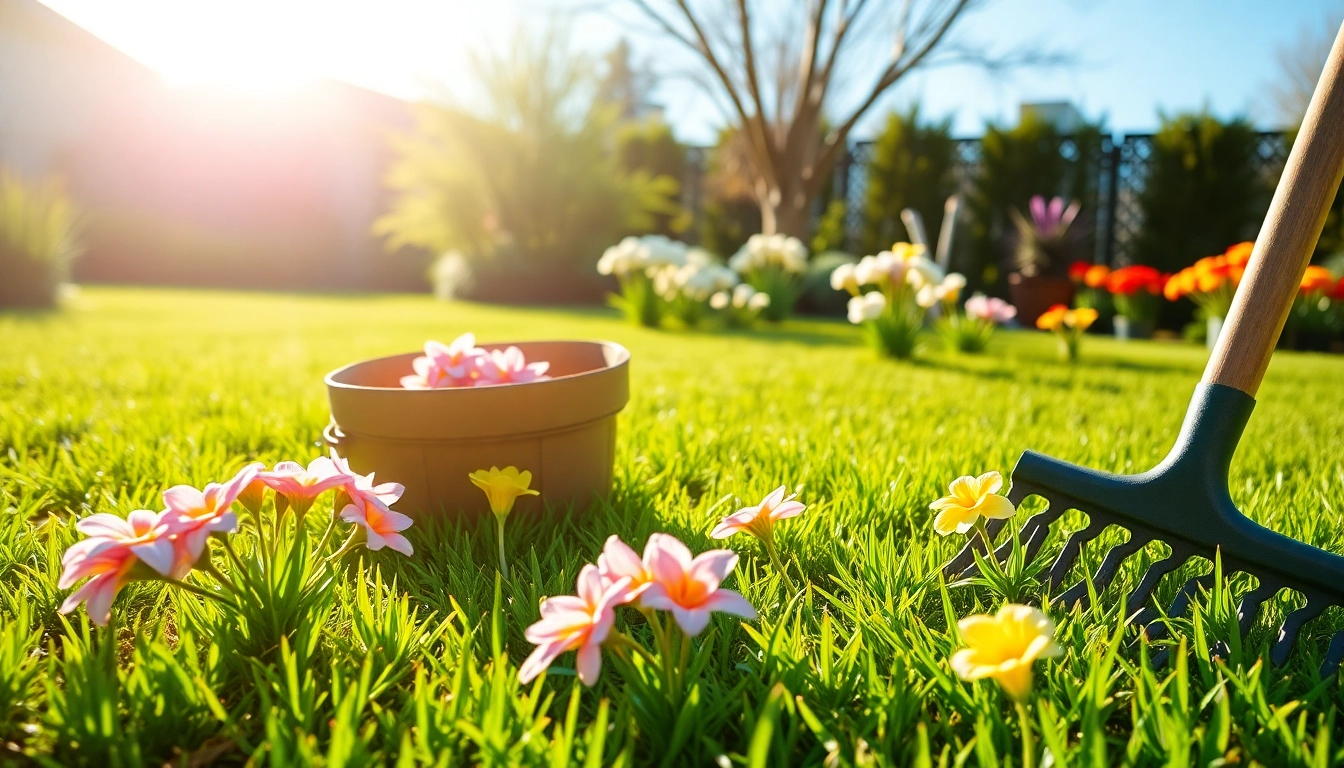Understanding Spring Clean Up Services
As winter fades and spring unfolds, many homeowners turn their attention to their yards, recognizing that a well-executed spring clean up is essential. This process is much more than mere aesthetics; it lays the groundwork for a thriving outdoor space, allowing plants to flourish and gardens to bloom. In this article, we will delve into the specifics of spring clean up, uncovering its scope, significance, and practical implementation.
What is Spring Clean Up?
Spring clean up refers to a comprehensive series of tasks performed in preparation for the growing season. It usually involves clearing away debris, such as fallen leaves, twigs, and other organic materials that have accumulated over the winter. More than just tidiness, a thorough spring clean up revitalizes your landscape, clears the way for new growth, and prepares your garden for planting.
Benefits of Professional Spring Cleanup
- Expertise: Professionals bring a wealth of knowledge and experience, ensuring that your landscaping receives the care it needs.
- Time Efficiency: Outsourcing spring clean up frees up your time to focus on other priorities.
- Advanced Equipment: Professionals often have access to high-quality tools and equipment that can make the job faster and more effective.
- Comprehensive Care: They can identify issues like disease in plants or soil problems that may need addressing early in the season.
Common Tasks Included in a Spring Clean Up
A typical spring clean up encompasses a variety of tasks aimed at rejuvenating your outdoor space. Common activities include:
- Debris Removal: Removing leaves, branches, and other debris ensures your yard is clean and prepares the soil for new growth.
- Pruning and Trimming: Properly cutting back perennials and shrubs promotes healthy new growth.
- Weed Control: Early removal of weeds can prevent them from taking over your garden beds.
- Soil Aeration: Aerating the soil promotes healthy root growth and improves water absorption.
- Mulching: Applying fresh mulch helps retain moisture, regulate soil temperature, and suppress weeds.
Prepping Your Yard for Spring
Before diving into the action, proper preparation can significantly streamline the spring clean up process.
Gather Required Tools and Supplies
Assembling the right tools is essential for effective spring clean up. Common equipment includes:
- Rakes for gathering debris
- Pruning shears for trimming
- Gloves for protection
- Mulch and soil amendments
- Trash bags or bins for waste disposal
- A lawn mower for grass maintenance
Setting Up a Cleanup Schedule
Establishing a timetable for your clean up can help manage tasks more effectively. Ideal times for complete yard clean up often fall between mid-March and late April, depending on your local climate. Create a checklist of tasks and assign them to specific days to ensure that no area is overlooked.
Identifying Areas Needing Attention
Take a thorough walk around your property to assess your landscape’s condition. Look for:
- Areas with excessive leaf litter
- Damaged or overgrown bushes
- Brown patches on the lawn or signs of pest issues
- Garden beds that need new mulch or soil amendments
Executing Your Spring Clean Up
Once preparedness is complete, it’s time to implement your spring clean up plan effectively.
Debris Removal Techniques
Start with debris removal. Use a rake to gather leaves and branches. For larger items, consider using a lawn vacuum or a leaf blower to save time. After gathering debris, ensure that you dispose of it properly, either through municipal collection services or composting if applicable.
Lawn Care and Maintenance Tips
Your lawn requires special attention during spring clean up. Effective maintenance tips include:
- Height Adjustment: Set your lawn mower to the appropriate height to avoid cutting the grass too short.
- Fertilization: Applying a nitrogen-rich fertilizer encourages quick green-up.
- Weed Control: Prevent weeds by applying pre-emergent herbicides early in the season.
Optimal Mulching and Planting Strategies
Applying mulch helps in moisture retention and weed prevention. When applying mulch:
- Use organic materials like bark, straw, or compost.
- Spread it evenly around plants, ensuring it’s not packed too tightly against plant stems.
- Plan your planting by considering the sunlight and water requirements of different plants.
Spring Clean Up Cost Factors
The cost of spring clean up can vary widely based on several factors, including location, the size of your yard, and the complexity of tasks required.
Understanding Pricing Structures
Pricing typically falls into two categories: hourly rates and flat fees. Hourly rates can vary based on the complexity of the job and the service provider, while flat fees often include a specific list of services, making budgeting easier.
Comparing DIY vs. Professional Costs
While DIY clean up may save money, it often lacks the efficiency and thoroughness offered by professionals. Weigh the potential costs of purchasing tools, fertilizers, and other supplies against the cost of hiring a professional service, which often provides a complete package.
Saving Money on Cleanup Services
To save on cleanup services, consider bundling services with neighbors or take advantage of seasonal discounts offered by local landscaping companies. Additionally, planning your clean up early can net you better pricing.
Post-Clean Up Maintenance
The conclusion of your spring clean up does not mean the end of care for your yard; ongoing maintenance is crucial for a healthy landscape.
Regular Yard Maintenance Best Practices
Developing a maintenance routine can keep your yard looking its best throughout the season. This includes:
- Regular mowing and trimming to promote healthy growth.
- Consistent watering, especially during dry spells.
- Ongoing weed control measures.
Preparing for Seasonal Changes
As seasons change, so do the needs of your landscape. Be prepared for summer heat with adequate watering and consider planting heat-resistant species. Transition to fall preparations by cleaning up spent plants and applying winter mulch in late autumn.
Tracking Your Garden’s Progress
Keep a garden journal documenting plant growth, seasonal changes, and any issues encountered during maintenance. This can help identify patterns and make informed decisions in future seasons, ultimately leading to a healthier and more vibrant landscape.















Leave a Reply